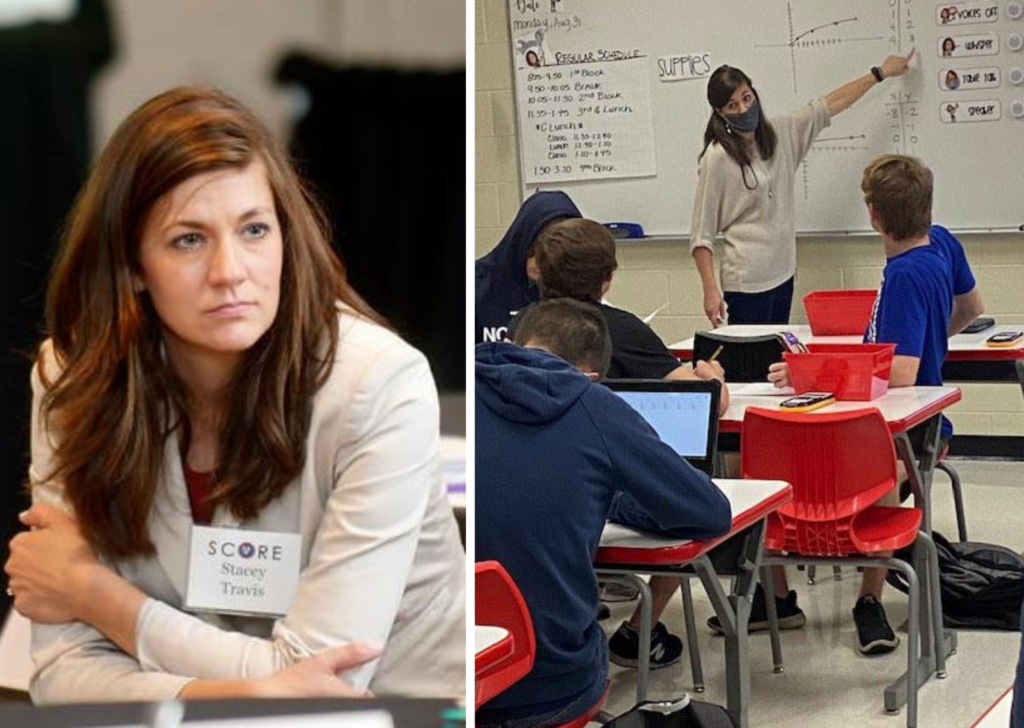
I logged into Zoom on July 30 and eagerly waited for my students to arrive for the first day of school. Two days before, I had hosted an “Open House” for my digital students — only four out of 27 attended.
I was discouraged, especially after adjusting plans on short notice. Our district had updated reopening plans, and now I would teach students attending in-person on a staggered schedule while also teaching students joining class remotely. I prepped for the new scenario and was eager to serve all students — no matter how and when I saw them.
Now the first day had arrived. I was ready to put our plans into practice, but I was nervous too. One by one, students started showing up in Zoom, and all of my students joining digitally showed up! To foster community, we played a version of a teambuilding activity called “stand up/sit down” using the reaction buttons on Zoom. The kids immediately started engaging with each other, and it was fantastic! As I write this, we are into week five of this new teaching environment, and I have learned a few lessons I’d like to share.
Decide What’s Most Important — Let The Rest Go (For Now)
Teachers have been bombarded with new technology to support remote learning. If I felt overwhelmed by the options, I knew the kids did too. I also knew I could not fully recreate my physical classroom in the digital world. I decided to focus on my priorities — what I was not willing to let go — and build my digital class around those. For me, that was quality instruction with good questioning and time built in for relationship building. I had to let go of some things: how I grade homework and the Problems of the Day I usually give as mini-quizzes. I traded that for the simplicity of class. Over time, I can slowly add back the other things.
Be Flexible
To make sure students were focused, I told them I needed to see each of their beautiful faces on Zoom for class each day. After my first class, I learned a student I had been urging to be on camera was going through a medical issue and needed privacy. I had unintentionally created an uncomfortable situation for her, and I responded with flexibility. I’ve also built flexibility in how students demonstrate their knowledge and give them options for submitting assignments. I want to see what they are doing more than I care about how they send it to me. Think about the rules you create for your students to live by and be flexible.
Celebrate Wins
I have a student who attends in person and was discouraged after failing his first test. He retook the test and thought he had failed again, but he passed. I found him in his fourth block class to tell him the good news. We fist bumped, and I told him how proud I was. I could tell he was proud too. In my digital course, I have a student who is known to give up easily and express attitude when topics are tough. She began staying after our Zoom calls for extra help. After several sessions, she said to me, “I finally understand math.” Our students are adjusting just like we are. Help them realize they are doing a good job and remember to celebrate successes.
I never thought I would be teaching digitally during a global pandemic. This school year has thrown more curveballs than I have experienced in my entire 15-year teaching career. Hold tight to student victories — they are looking to us to see how we respond. We know that we are what is best for kids. We can get through this. Better yet, we can thrive.
Stacey Travis teaches math at Maryville High School in Maryville City Schools and was a 2017-18 Tennessee Educator Fellow.
More educator voices:
